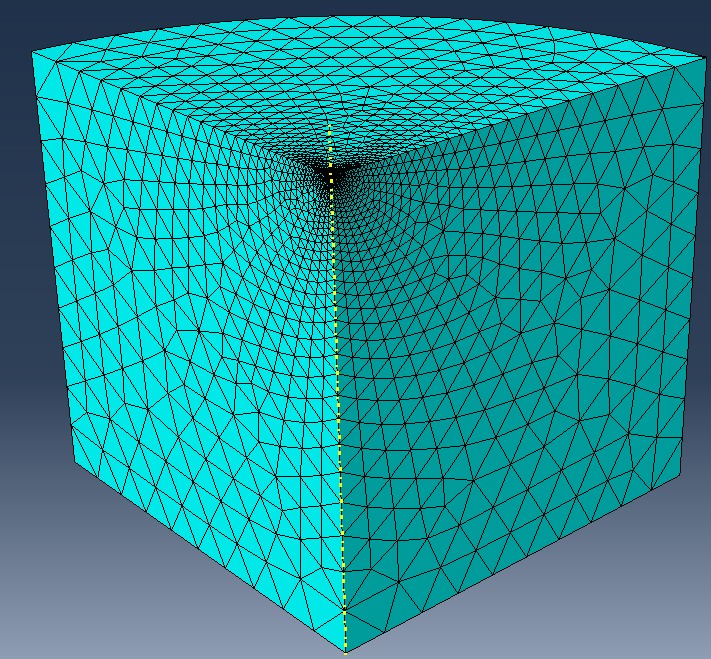McFlyMarty
Mechanical
Hello,
I am studying sharp indentation on a quarter cylinder corner in Abaqus and I am not satisfied with my mesh, which is currently using Tet elements (with edge seeding in the corner). I would like to use bricks (Hex element) and refine the mesh in the contact region. I already tried several solutions with the Bottom-up and "classic" mesh tools. But I don't know how to create fine transitions between each region.
I attached a picture of the partitioned mesh (with zooms on transitions) I would like to obtain.
Does anybody know how to do that ?
Thank you very much
Best,
--
McFly M.


